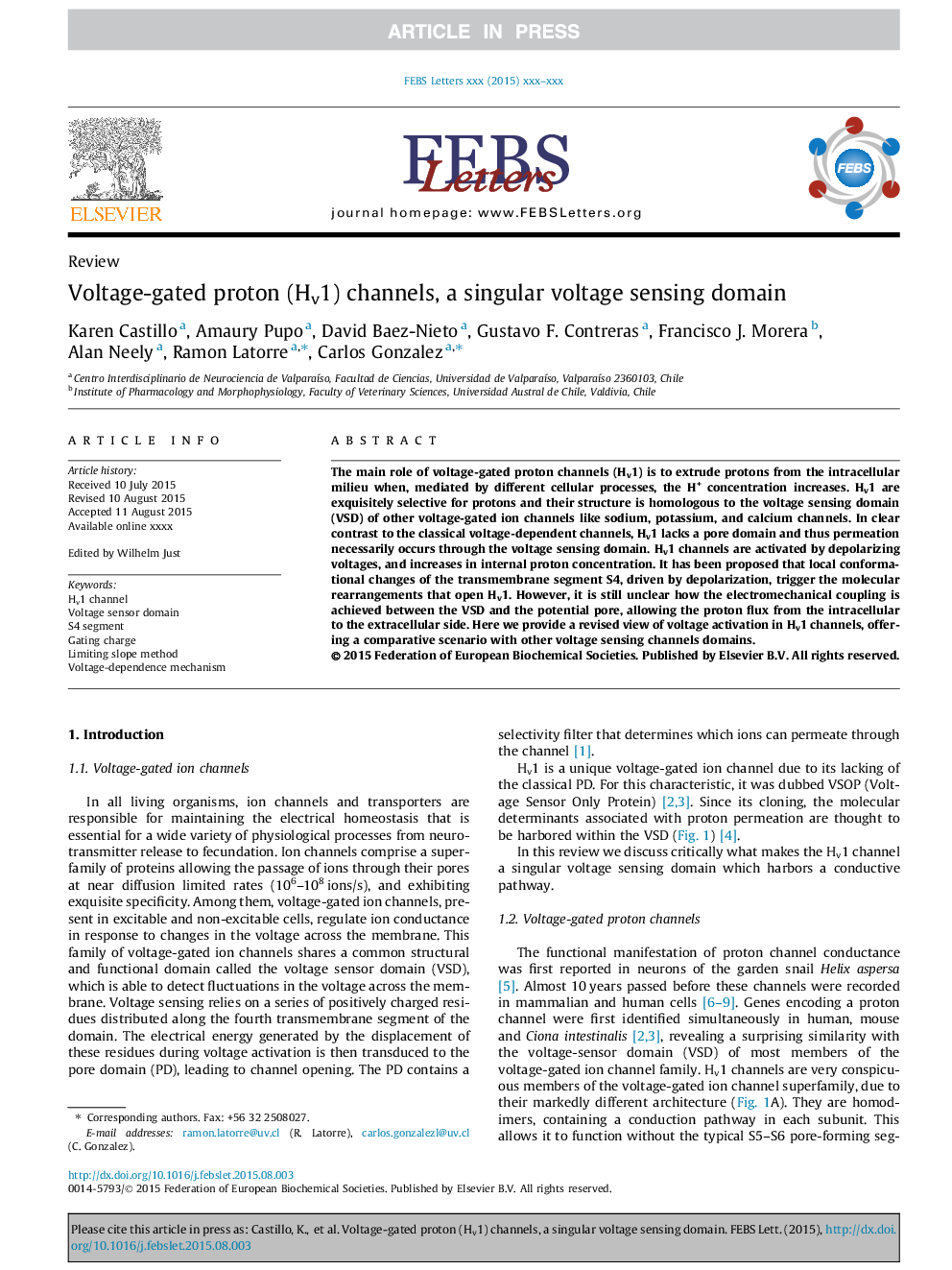| Article ID | Journal | Published Year | Pages | File Type |
|---|---|---|---|---|
| 10869839 | FEBS Letters | 2015 | 8 Pages |
Abstract
The main role of voltage-gated proton channels (Hv1) is to extrude protons from the intracellular milieu when, mediated by different cellular processes, the H+ concentration increases. Hv1 are exquisitely selective for protons and their structure is homologous to the voltage sensing domain (VSD) of other voltage-gated ion channels like sodium, potassium, and calcium channels. In clear contrast to the classical voltage-dependent channels, Hv1 lacks a pore domain and thus permeation necessarily occurs through the voltage sensing domain. Hv1 channels are activated by depolarizing voltages, and increases in internal proton concentration. It has been proposed that local conformational changes of the transmembrane segment S4, driven by depolarization, trigger the molecular rearrangements that open Hv1. However, it is still unclear how the electromechanical coupling is achieved between the VSD and the potential pore, allowing the proton flux from the intracellular to the extracellular side. Here we provide a revised view of voltage activation in Hv1 channels, offering a comparative scenario with other voltage sensing channels domains.
Keywords
Related Topics
Life Sciences
Agricultural and Biological Sciences
Plant Science
Authors
Karen Castillo, Amaury Pupo, David Baez-Nieto, Gustavo F. Contreras, Francisco J. Morera, Alan Neely, Ramon Latorre, Carlos Gonzalez,
